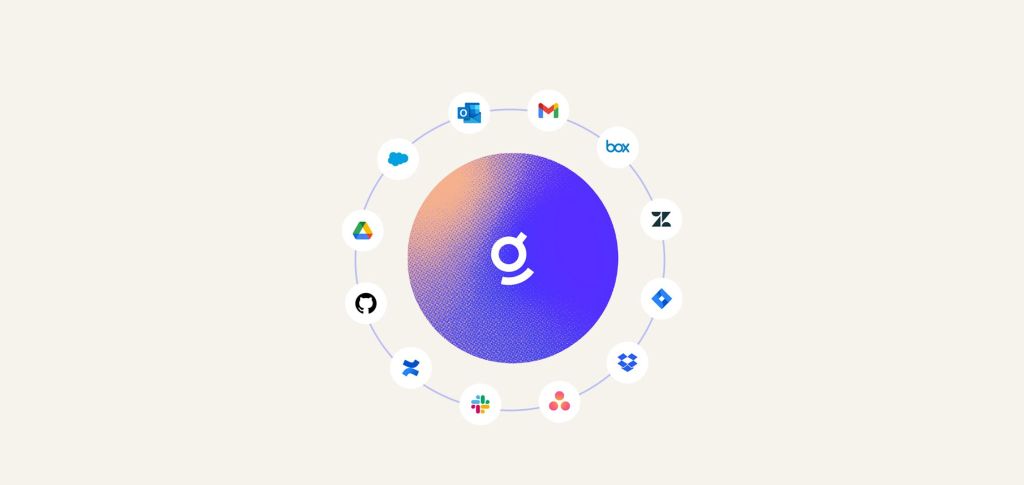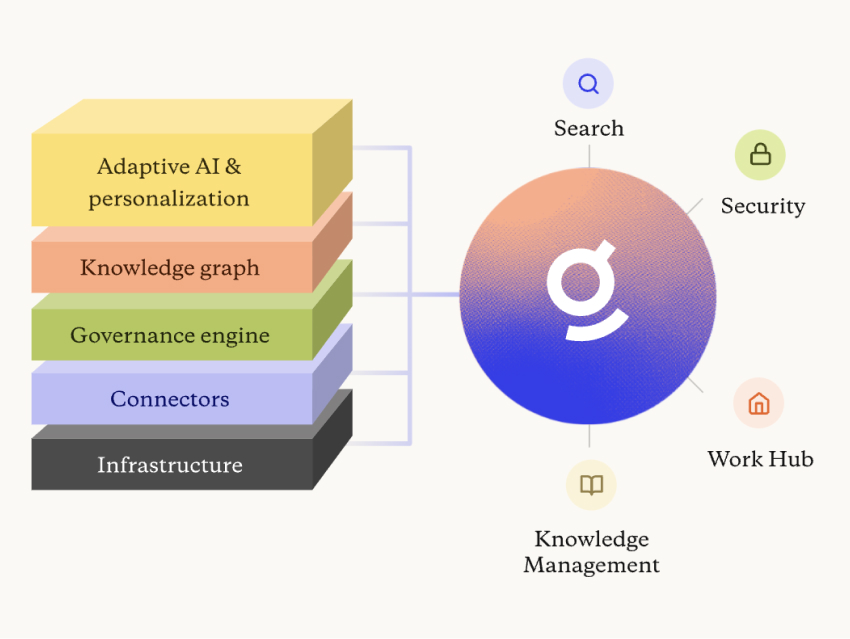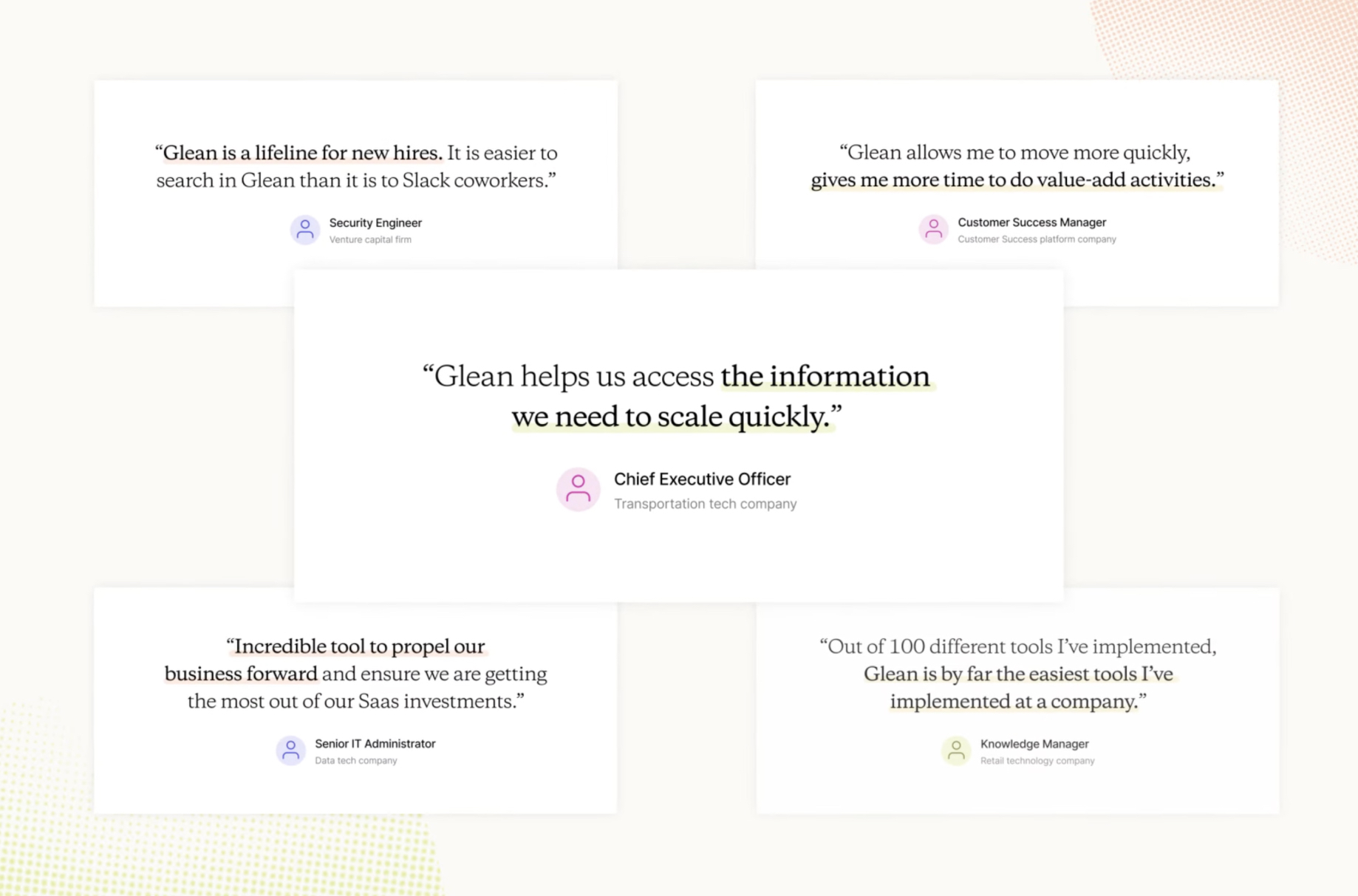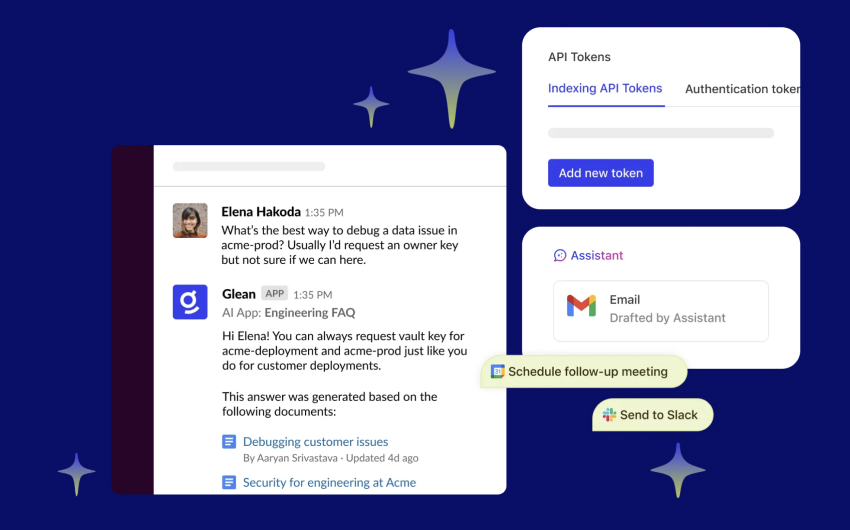
Founder
Arvind Jain
Work AI for all

After early engineering roles at Akamai and Riverbed Technologies, he spent more than a decade as a distinguished engineer at Google leading teams on its core search, Maps, and YouTube products. In 2014 he struck out on his own to co-found Rubrik, a cloud data security company. Nearly five years in, it had raised a combined $553 million and was worth $5.5 billion.
Most people might have stayed on to see Rubrik through what’s likely to be a significant exit. What mountains could there possibly be left to climb? The answer: The one that no one else has climbed yet.
Arvind gets the question a lot these days as he explains the genesis of Glean, an AI-powered enterprise platform that is helping employees at some of the world’s biggest companies quickly find and use the answers they need to do their jobs and be more productive at work. Based in Palo Alto, it has over 300 employees and its customers include Databricks, Duolingo, Grammarly and Plaid, as well as some of the world’s leading transportation, hospitality, and telecommunications enterprises.
Glean traces its origins in part to an insight from a 2018 survey that Rubrik management conducted of its employees. “In that survey, we found that the number one complaint was that employees didn’t feel enabled,” Arvind said looking back. “They couldn’t find the information they needed or the people that could help them do their work.”
Rubrik had grown exceptionally fast, from only a few hundred to more than 1,500 employees in the space of a year. The result: “It was a mess with a lot of people feeling lost as they were starting their jobs,” Arvind says. “We didn’t have the discipline for organizing the company’s knowledge, or even organizing our people directory and defining people’s roles.”
Like so many other cloud companies, Rubrik used scores of SaaS applications, for communication and collaboration, to track the sales process and so many other things. But there were no rules regarding what information should go where. Nor was there an easy way to search across those many cloud applications at once.
It’s an old problem, one that McKinsey identified as far back as 2012 when it estimated that employees spend more than nine hours per week finding the information and resources they need to be productive. Arvind had experienced the problem himself: “I’m a search engineer, and even I was struggling to find things I needed. I just couldn’t. I tried to buy a product, and I found it didn’t exist.”
There’s some irony here. Google’s search capabilities, on which Arvind had spent so much of his career, are a daily fixture of modern life for billions of people in their personal lives. But nothing has ever come close to equaling Google’s impact at work. Many had tried – even Google itself – but none had succeeded.
“I felt it was a fundamental problem. Why should I have to search 10 or 15 different places or ask people around the office, when it should take five seconds?” he says. “It was such a large problem that literally every person at every company in the world faces some time. I felt like it was a problem that had to be solved yet no one was doing it. And so I took it upon myself. I decided to jump from Rubrik because I felt this problem needed me more.”
One of Arvind’s first conversations was with Mamoon Hamid who understood the problem and lead the company’s Series A. Arvind identified and assembled a team, and they took up incubation space in the basement of Kleiner Perkins’ offices on Sand Hill Road in Menlo Park where they worked on the product for 18 months until the onset of the pandemic in 2020.
For Mamoon the time was right to invest in Glean’s vision for lots of reasons. Over the last decade or so, a significant amount of enterprise work and data has shifted away from on-premise applications and into cloud-based ones like Salesforce, Workday, Slack, and Box. “This would not have been possible even ten years ago because the transition to the cloud was incomplete, so something like Glean would not have worked,” he said.
And now that the cloud-based building blocks are in place, Glean’s opportunity is enormous, he says. “To me, Glean is as big if not bigger an opportunity as Slack,” Mamoon says. “Every knowledge worker who uses a lot of software to do work needs this and is going to want it. And this is showing up in the business growth we’re seeing already.”

For Arvind, Mamoon was also the natural person to approach with the idea for Glean. “He had invested in companies like Slack, and I thought that was a good fit,” Arvind says. “I felt Slack had faced some of the similar challenges I knew we would also face, which was convincing people they needed something like this when nothing like it exists. So his experience from Slack’s early days was a big draw for me.”
Glean integrates with many common SaaS applications via APIs so it quickly becomes the single place to find information that lives across all of them. Rather than search for, find, and then open multiple documents and conversations with the data you need in them, Glean will simply retrieve the most relevant information and synthesize that information into the answer you need.
“We didn’t set out to build a search product,” Arvind says. “We want to go beyond that to make you more productive in your work life by making sure that the information you need at work is always available to you when you need it. Instead of giving you a list of documents to read, it goes a step further by reading them for you, so you get synthesized information from those documents. In that way, you get precise answers to the question you had.”
In other cases, it can help you find the person in your company who’s the subject matter expert on the question at hand.
And it’s aimed at large enterprises, which means that not everyone can have access to all of the company’s information. Glean is designed to understand a person’s role in the organization, and consequently what kinds of information they’re authorized to see.
Here Glean’s use of cloud APIs comes into play again, Arvind says. “The APIs allow us to understand the permission model within the application, and more often than not we have pre-built integrations for them, so there’s nothing the customer has to do.”

Underpinning it all are multiple AI models, including OpenAI’s GPT-4, and Google’s PaLM 2 and Gemini. But even before those models emerged, Glean was using machine learning and predictive models as well as large language models from the beginning. “Depending on the task and complexity, you’re using those models,” Arvind says.
Glean is also building its own AI model for each customer. “We use the open source models, but then we train them again on each company’s corpus. We put all the company’s information through it, and make sure that it learns all of that company’s internal lingo.” The bottom line: Each customer gets its own specific AI model. Glean not only answers the question but it does so in a way that makes internal sense. And over time as it answers more questions and gathers more signals from within that company, the answers get better.
And all of this, Arvind says, takes place within the customer’s own IT environment, so the questions asked and answers given never leak out. “We don’t use the knowledge from one customer to train a model for another,” he says.
At a moment when nearly every conversation about technology seems to focus in one way or another on generative AI, it wasn’t always so. Despite the obvious wind at Glean’s back today, it wasn’t easy to convince customers to try it before 2022. “In the early days, we had a lot of people agree with us that there was a problem with how you find things at work,” Arvind says. “But there was nothing else in the marketplace like Glean and so there was nothing to compare us to, no budget for doing what we do, and no way to assess how much they should pay for it.”

It took some evangelism and some free trials. “We asked some companies to try our product for free for a long time. We told them to just keep using it and to give us feedback,” Arvind says.
“We had about 10 or 20 companies working with us, and none of them were paying us.”
Over time as usage increased, and surveys showed that people felt it helped them be more productive at work, most of them signed on as paying customers. “It felt really good when that first customer signed a contract to become a paying customer. That was a big validation. It meant we had built something useful.”
As usage increased, and surveys showed that people felt it helped them be more productive at work, most of them signed on as paying customers. “It felt really good when that first customer signed a contract to become a paying customer. That was a big validation. It meant we had built something useful.”
From there word got around among Silicon Valley companies, and quickly the larger corporations were calling. “We have a very good word-of-mouth reputation,” Arvind says.

“It will look at the materials you have about the product and write the posts because it has both the generative capabilities and all that company context,” Arvind says. “It will become a general-purpose assistant for every knowledge worker in every enterprise in the world. And that opportunity by itself can make us one of the biggest enterprise software companies in the world.”